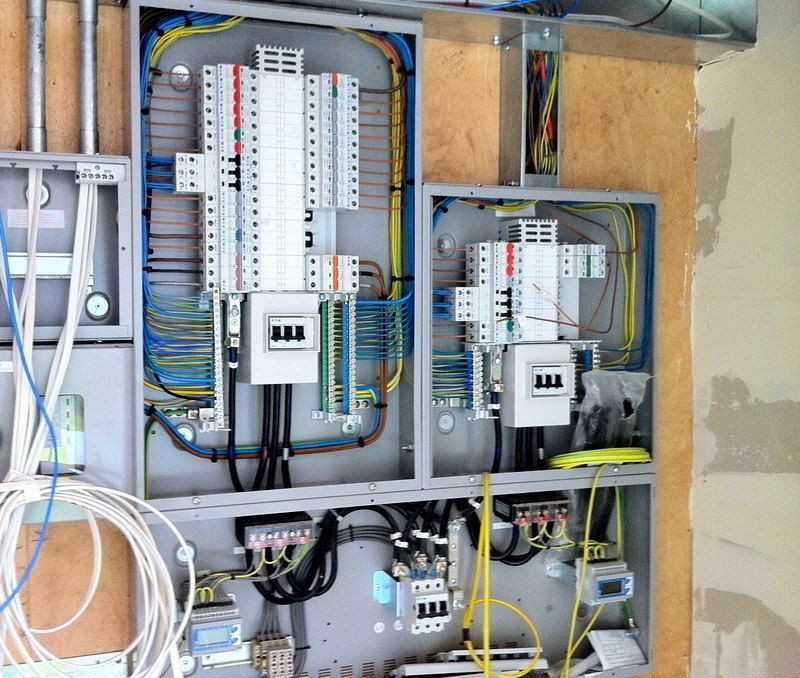Discover the very best in BRE Services for Electrical and Automation
Discover the very best in BRE Services for Electrical and Automation
Blog Article
The Ultimate Guide to Electrical Installment: Tips and Methods for a Safe and Efficient Home Circuitry System
In the realm of home upkeep, couple of facets are as critical yet commonly ignored as the electric wiring system. By discovering the nuances of electric safety and security measures and energy-saving practices, this detailed guide will shed light on the details of home circuitry, encouraging people to take fee of their home's electrical infrastructure.
Understanding Electric Precaution
To make sure the safety and security of both individuals and residential or commercial property, understanding and applying correct electric safety procedures is vital in any type of home circuitry task. It is essential to perform an extensive examination of the electrical system before beginning any kind of wiring job to recognize potential dangers or concerns that require to be dealt with.
Moreover, making use of the appropriate tools and devices is essential for preserving security throughout electric installations. Insulated gloves, voltage testers, and safety glasses are some of the basic safety gear that must be put on to avoid electrical shocks or crashes. It is additionally important to de-energize circuits before servicing them and to label all circuits and breakers clearly to avoid confusion.

Essential Devices for Home Circuitry
Ensuring the proper application of electric safety and security steps in home electrical wiring tasks entails making use of a details set of important tools created to promote the installment procedure properly and securely. Some of the key tools needed for home circuitry projects consist of a voltage tester for checking live cords, cord pole dancers for getting rid of insulation from cords, a cord cutter for specifically reducing cords to size, a screwdriver established for safeguarding electric parts, electric tape for insulation and safeguarding links, a wire ripper for removing wire sheathing, and a multimeter for gauging voltage, current, and resistance.
Step-by-Step Electric Installment Overview
Beginning an electric installment task requires thorough preparation and adherence to safety guidelines. Before starting any kind of work, guarantee you have a thorough strategy detailing the design of the electrical system, consisting of the positioning of outlets, switches, and components. Think about the power demands of each device to establish the proper cable gauge and breaker sizes.
The primary step in the setup process is to close off the power supply to the area where you will certainly be functioning. Use a voltage tester to confirm that the circuits are de-energized prior to touching any cords. Next, carefully get over at this website rid of existing fixtures or electrical outlets and detach the wires.
When installing brand-new wiring, run cords through wall surfaces and ceilings, safeguarding them in location with ideal fittings. Adhere to local building regulations and maker instructions for appropriate cord installation and connections. BRE Electrical. Ensure to classify wires for simple recognition and future upkeep

Troubleshooting Common Wiring Issues
Having completed the installation process as outlined in the previous subtopic, troubleshooting common electrical wiring problems is a crucial skill for guaranteeing the security and functionality of your electrical system. One usual problem is a tripped breaker, often created by overloaded circuits or a brief circuit. To fix this, situate the breaker panel, determine the stumbled breaker by looking for the one not fully in the "on" position, and reset it by flipping it totally to "off" and afterwards back to "on." Another common problem is a damaged outlet, characterized by no power or recurring power supply. Ensure the outlet is not managed by a switch, then use a voltage tester to check for power. If there is no power, switch off the circuit, evaluate the electrical wiring links for any kind of loose or broken cords, and change the electrical outlet if necessary. Continually flickering lights can suggest loosened electrical wiring links or an overloaded circuit. To resolve this, check and tighten all cable connections in the influenced components and buttons and redistribute the tons on the circuit to stabilize the electric need. Consistently inspecting and without delay dealing with these common electrical wiring issues will certainly keep the security and efficiency of your home electric system.
Tips for Energy-Efficient Electrical Equipments
For ideal energy effectiveness in electric systems, applying wise methods and utilizing energy-saving technologies is vital. One essential tip for attaining an energy-efficient electric system is to upgrade to LED illumination. LED bulbs take in dramatically less energy than typical incandescent bulbs and have a longer life expectancy, making them a cost-effective selection over time. Furthermore, setting up programmable thermostats can help control heating and cooling systems, recommended you read reducing energy waste when no one is home. Another method is to buy energy-efficient home appliances that are ENERGY click resources celebrity certified, ensuring they meet high criteria for power efficiency. Appropriate insulation and sealing of home windows, doors, and electrical outlets can additionally protect against power loss, eventually decreasing the workload on electrical systems. Finally, take into consideration including renewable resource sources like photovoltaic panels to more decrease reliance on traditional power grids. By including these energy-efficient ideas and modern technologies, house owners can not just conserve cash on their electrical energy expenses however also decrease their environmental influence.
Verdict
In final thought, applying appropriate safety procedures, making use of important tools, complying with a step-by-step setup guide, troubleshooting common concerns, and including energy-efficient ideas are important for a safe and efficient home circuitry system. By sticking to these techniques, house owners can ensure the durability and functionality of their electric setups. It is necessary to prioritize security and performance when it comes to electric operate in order to prevent prospective hazards and to maintain a trustworthy electrical system in the home.
Report this page